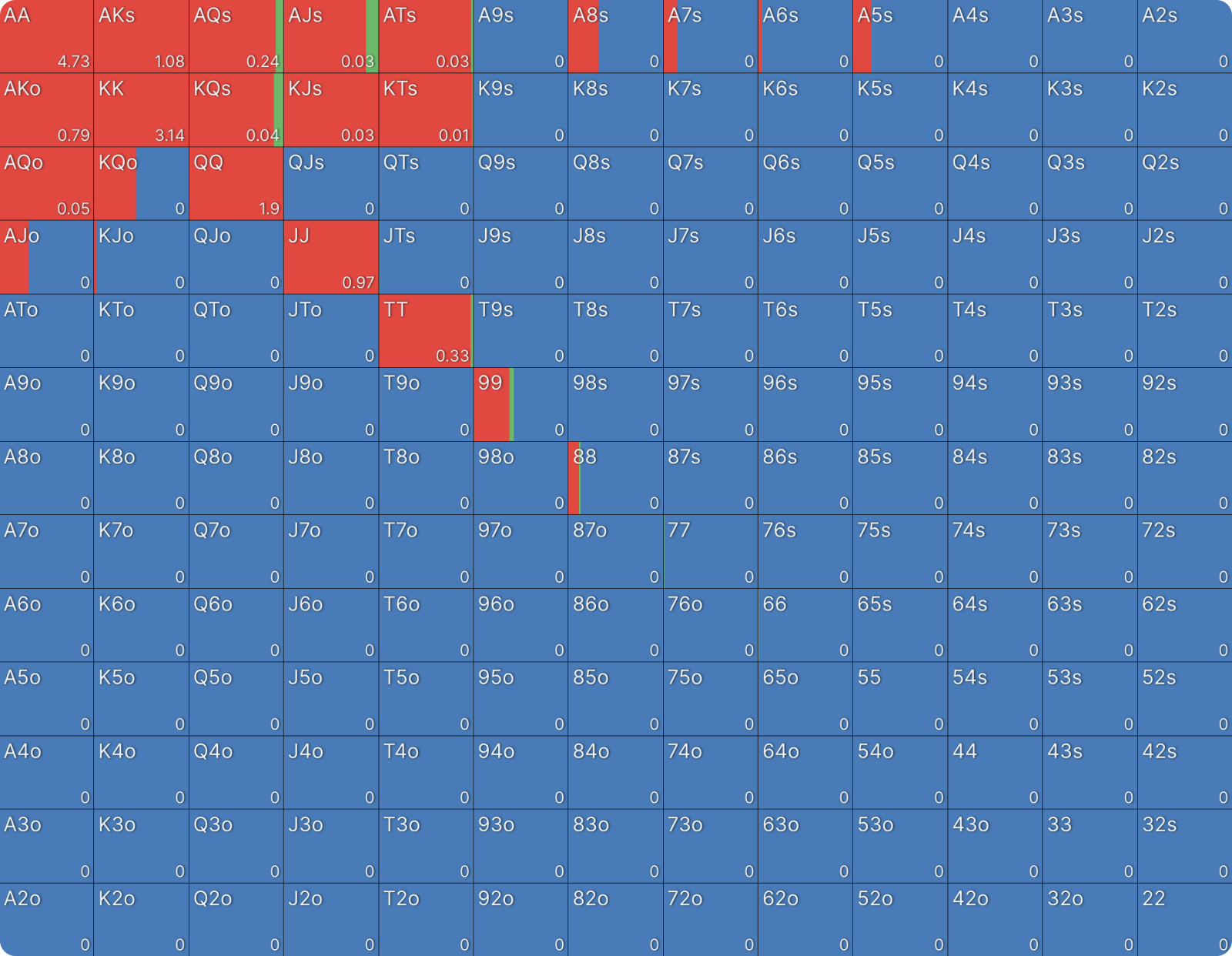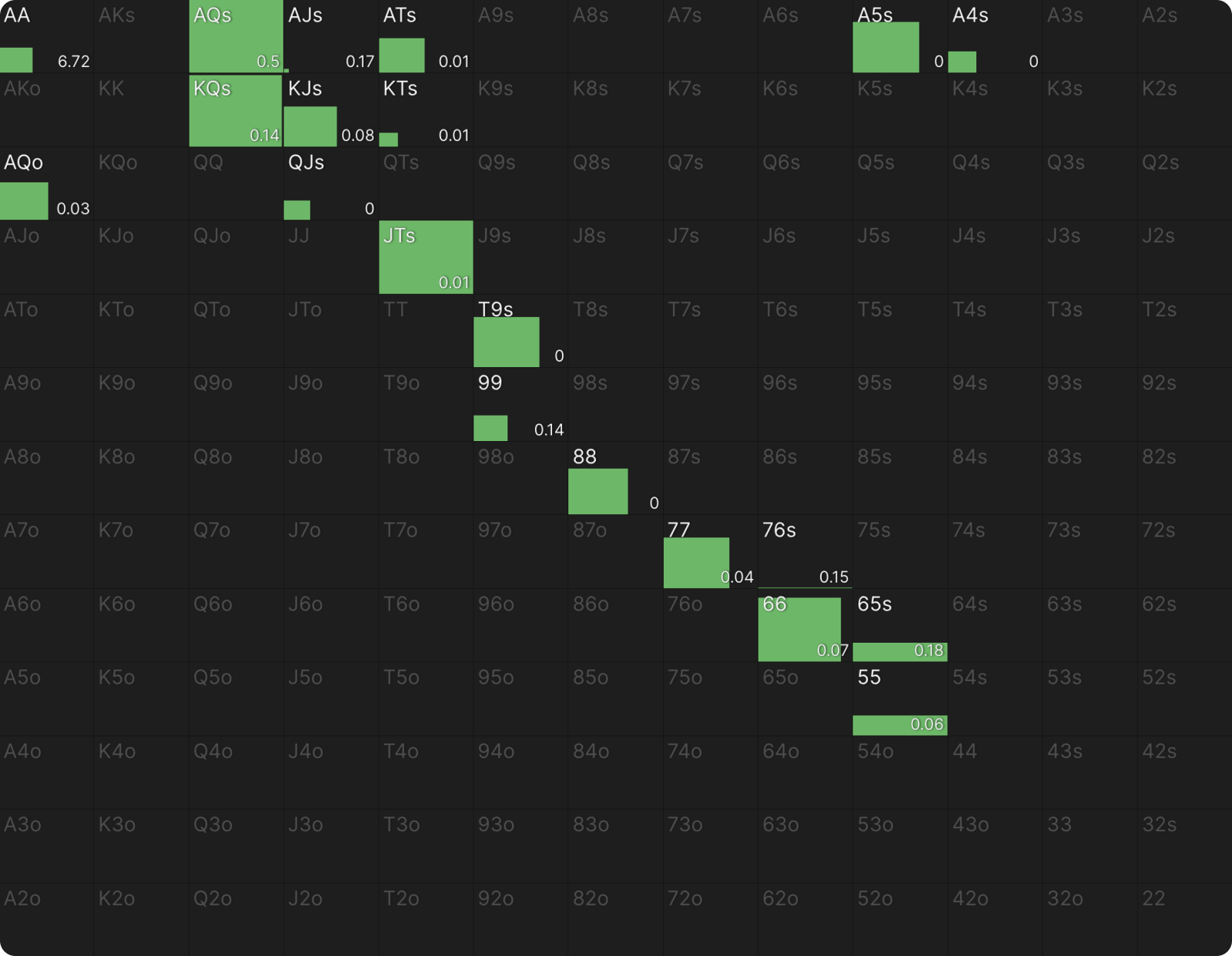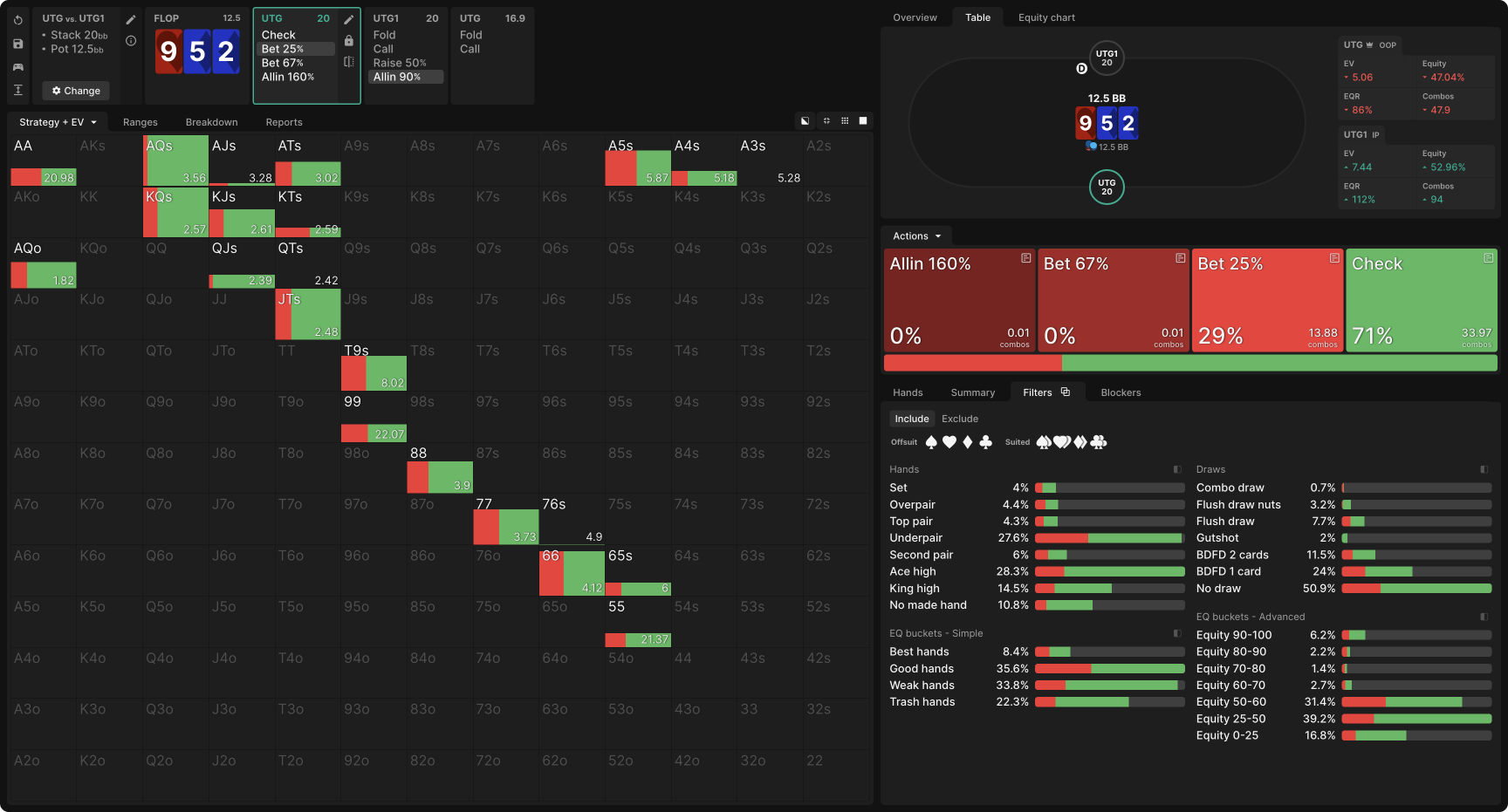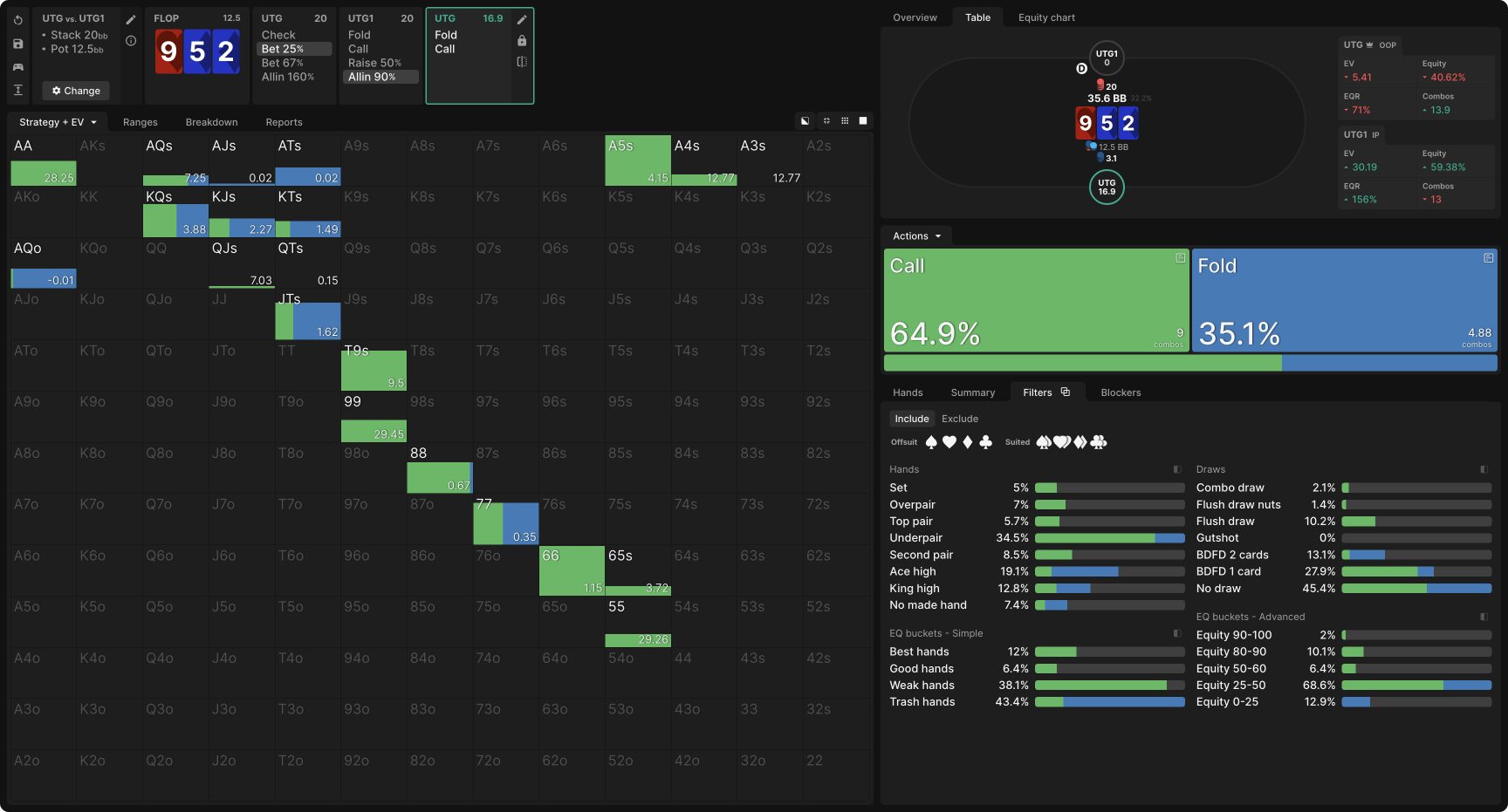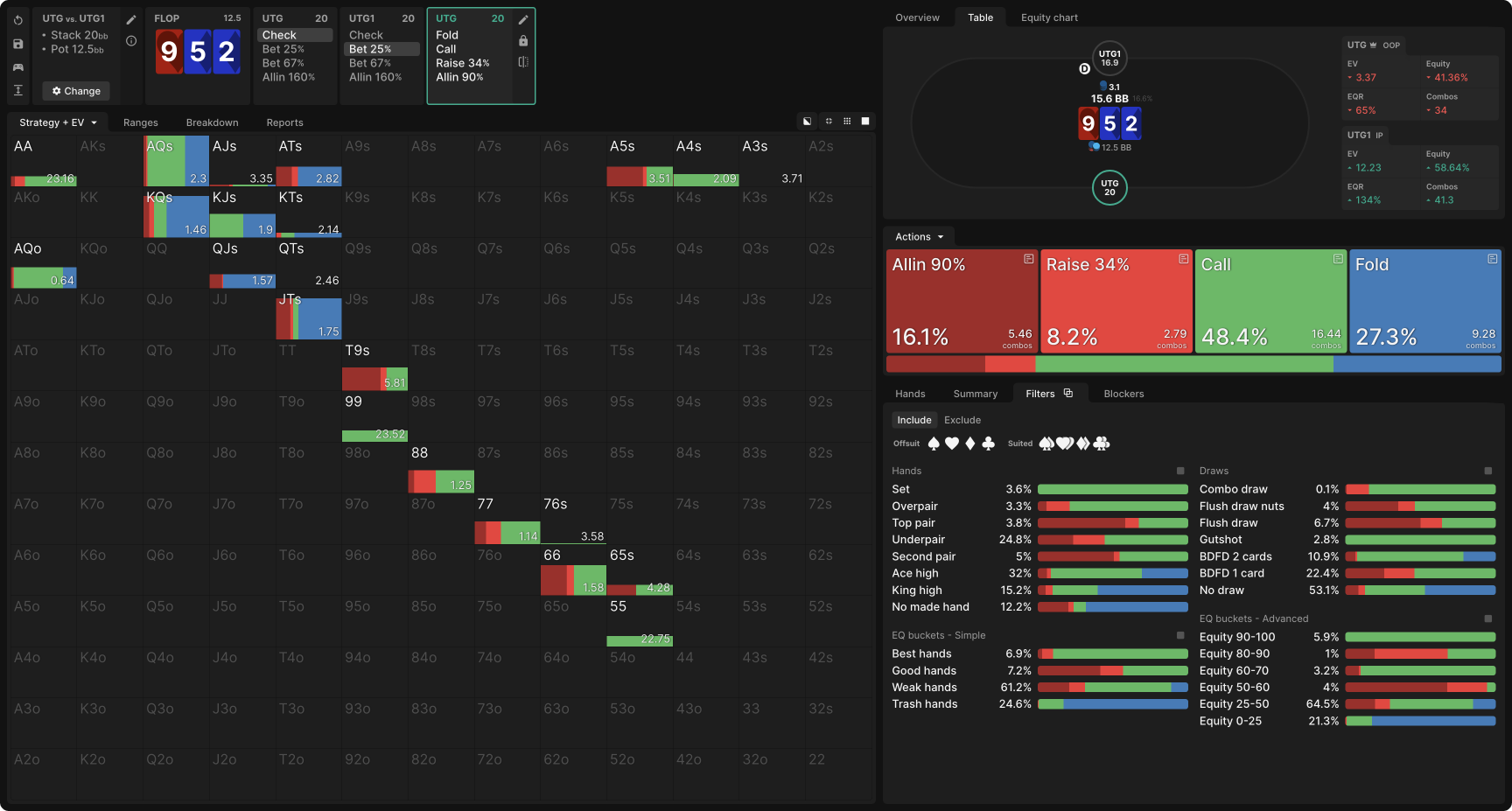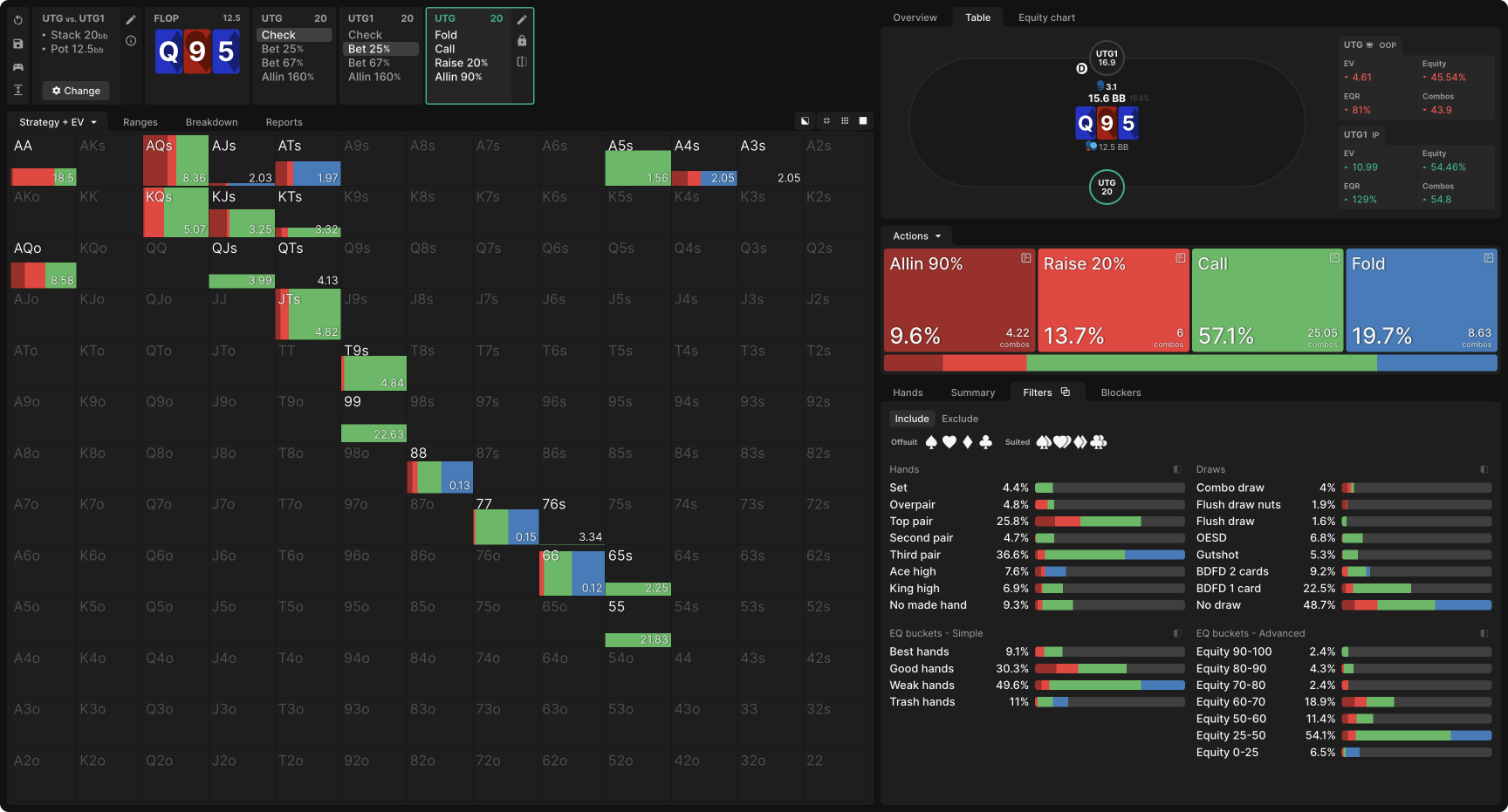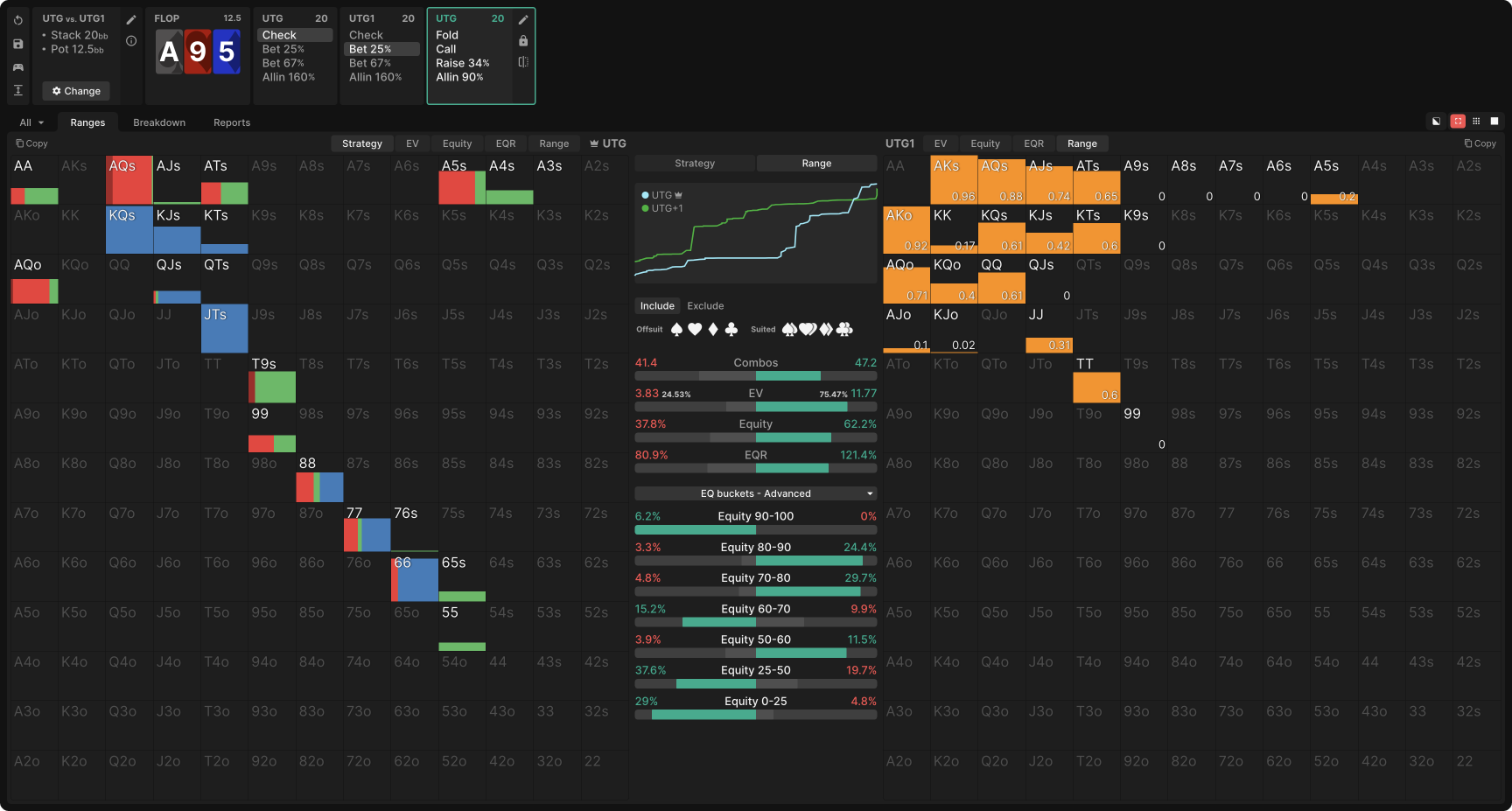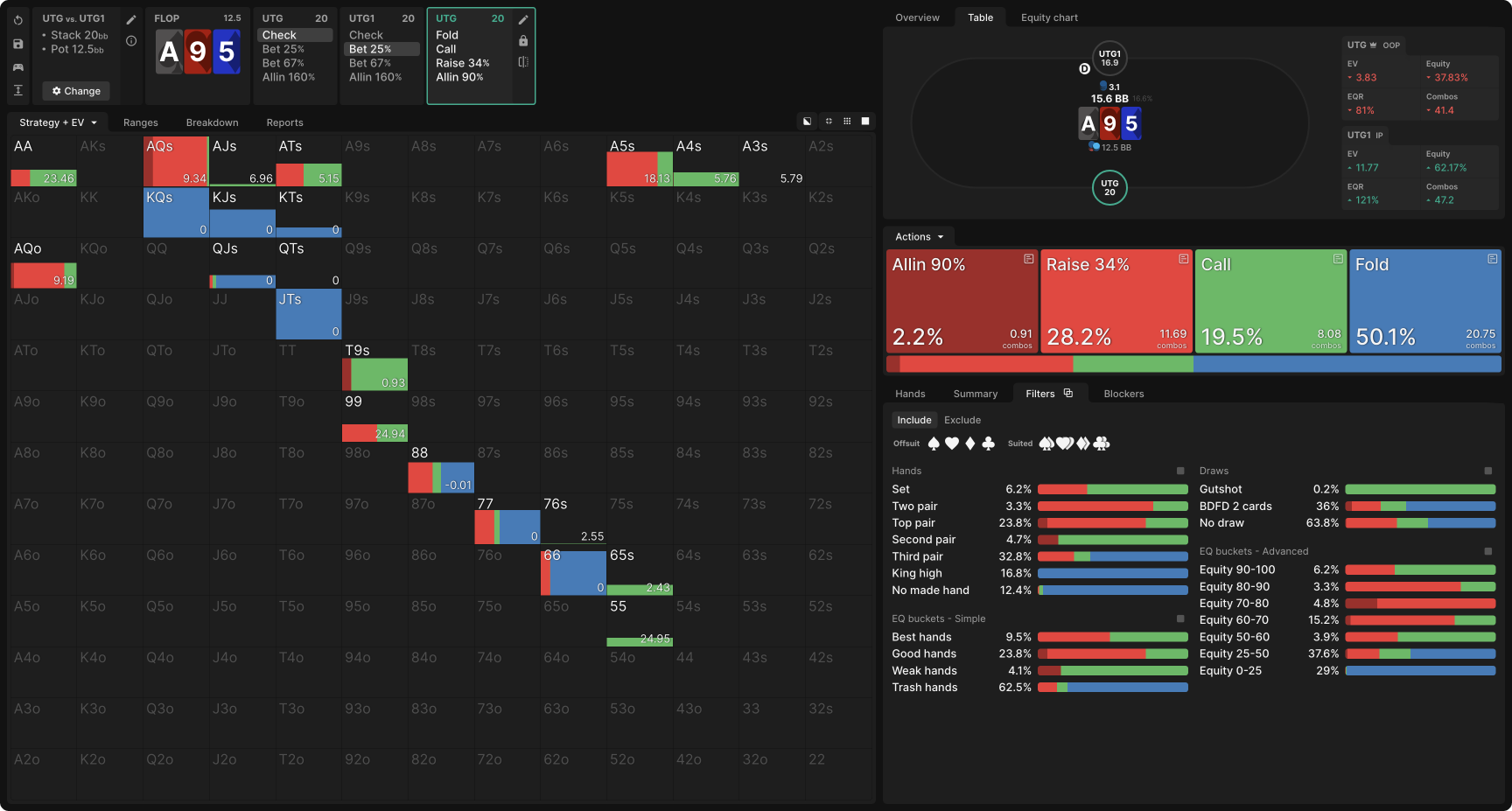Defending Against Tiny 3-Bets
Tournament poker is about precision. Cash games, where stacks typically run into the hundreds of big blinds, are more forgiving of slight variations in preflop raise sizing or calling ranges. There’s room to make up the difference later.
In tournaments, savvy adversaries will size their 3-bets precisely, adapting to the positions and stack sizes to give you the most challenging possible decisions. For example, when facing a 3-bet with just 20 or 25bb, it’s tempting to purely play a shove-or-fold strategy. Tough opponents will combat this with tiny 3-bets, enabling them to profit from your folds while losing the minimum to your shoves.
These tiny 3-bets offer a new dilemma: should you take the appealing odds for the decidedly unappealing proposition of calling and playing OOP after the flop against a strong range? And if so, how should you play after the flop to make the most out of the situation?
The answer, of course, will depend on the flop. In this article, we will investigate a variety of flop textures to help you navigate the necessarily rough waters that come with playing a (relatively) weak range from out of position.
Preflop Ranges
When the raiser is IP, the strategy for 3-bet pots bears some similarity to single-raised pots between an in position preflop raiser (PFR) and the BB, and for the same reasons. The 3-bettor takes on a lot of risk preflop, especially when they are in early position. Not only are they raising into a strong opening range, but they also have to worry about all the players behind them waking up with monsters. They need a strong hand to 3-bet, and should they get fortunate enough to see the flop heads up against the original raiser, they have gotten lucky. Their reward is an equity advantage and a nuts advantage postflop. With such shallow stacks, they can treat their overpairs as the nuts, even on scary flops that, in other circumstances, would favor the caller.
As for the caller, they are playing the role of the BB in a single-raised pot. They start with a strong range because they opened from early position, but relative to the 3-bettor’s range, they do not require a strong hand to call. They act with the knowledge that everyone else has folded, they close the action, and they are getting much better odds to call than their opponent had to raise.
This means the caller should expect to be at a disadvantage after the flop. They should expect to check-fold often. They will have tough decisions about whether to continue to a flop bet, and if they do continue, whether to do so with a raise or call. All of that is part of the course when playing OOP with a range disadvantage. Their goal is to make the best out of a bad situation, not to make the kinds of super-profitable bets the IP player gets.
When you’re out of position and call a 3-bet, you should expect to be at a disadvantage after the flop. Your goal is to make the best out of a bad situation.
Our examples here are drawn from 25bb MTT scenarios with 50% of the field remaining. UTG opens to 2bb, UTG1 3-bets to 5bb, and the action folds back to UTG. This is a sweet spot where ICM is a factor, but UTG still has a calling range. With 25% of the field remaining, they respond almost exclusively by shoving or folding.
The postflop strategies come from Custom Solutions using the 50% Field ICM ranges detailed above, but it’s important to note that ICM is not a factor in the postflop simulation, as GTO Wizard AI does not currently support postflop ICM. If it did, we would likely see even more tight and aggressive play than these solutions suggest.
UTG1’s 3-betting range is extremely strong, consisting almost exclusively of the biggest broadway hands and pocket pairs:
UTG’s calling range is modest and cappedCapped
A range without many very strong hands, relative to the board. See uncapped.. It consists almost exclusively of hands that are not strong enough to shove, hands that call only because of the attractive (9.5:3) pot odds:
Realizing and Denying Equity
With such shallow stacks, there is very little room for deceptive play. When UTG has a big hand, they mostly just want to get it in preflop. The large pot (relative to the stack size behind) incentivizes hands as strong as KK and AKs to focus on denying 20-25% equity of UTG1’s lighter 3-bets rather than trying to get even more money into the pot by calling. Even AA 4-bets more than it calls. The closest thing to traps are AQs and KQs, which can neither fold out dominating hands nor get called by anything they dominate.
Realizing equity from OOP is always a challenge, which is the other reason UTG prefers to 4-bet even their best hands. To the extent there is any deception in their strategy, it lies in the interplay between their pocket pairs and suited broadway hands. When low cards flop, UTG will play the pairs strongly to compensate for the weakness of the whiffed broadways. When big cards flop, the pocket pairs are among their worst hands, and they will mostly bluff or fold them while playing their broadway cards strongly.
The deception in UTG’s calling range comes mainly from the interplay between their pocket pairs and suited broadway hands.
UTG puts a premium on equity denial and realization after the flop as well, especially on more dynamic boards. When they flop a hand strong enough to play for stacks, they mostly check-raise it. Because of the very low SPR, this includes hands that could easily be dominated by UTG1’s stronger range. Playing a capped range never feels good because there is no way to avoid paying off the top of your opponent’s range. The only thing you can hope to achieve is limiting the profitability of the bottom of their range. That requires recognizing and refusing to fold the top of your own range.
A Dynamic Flop
On 9♥5♦2♦, UTG actually has the advantage at the very high end of the equity distributionEquity distribution
A line graph or scatter plot of a player’s hand vs range equity, sorted from weakest to strongest, such that the equity of every individual combination in the range is represented. Commonly used in game theory analysis., and donk betting plays a significant role in their strategy:
The choice of which hands to bet is not as arbitrary as it appears. With 99, UTG bets top set without a diamond but checks when they have one. With the other pocket pairs that did not flop sets, they prefer to bet when they do have a diamond. As explained above, the pairs mostly stack off if UTG1 shoves over the bet, as do the overcards+flush draw hands:
This flop misses almost all the unpaired hands in both players’ ranges. The pocket pairs aren’t great, but they’re the best you’ve got, and if you’re not going to fold them, there’s a lot to be said for getting the money in early.
These same hands are candidates for check-raising, except for the sets, which exclusively slowplay when checked because they are much less in danger than the pocket pairs of losing value on later streets.
From a solver’s perspective, it is perfectly viable to either check-shove or donk bet and call off with 66 despite your opponent’s range being thick with overpairs. That’s a consequence of the very low SPR and the fact that this flop misses almost all the unpaired hands in both players’ ranges. The pocket pairs aren’t great, but they’re about the best you’ve got on this board, and if you’re not going to fold them, there’s a lot to be said for getting the money in early. More cards coming down means more chances to get drawn out on or bluffed out.
A Moderately Dynamic Board
Swapping the 2 for a Q makes the board somewhat less dynamic. Both players have a lot of KQ and AQ, which are much less vulnerable to overcards than equivalent hands on 952. Both players also have a lot of broadway straight draws, which, even though they won’t come in often, represent a real threat because of the size of the pot. Getting drawn out on, in a pot worth as much as your stack is nothing to sneeze at.
Getting drawn out on, in a pot worth as much as your stack is nothing to sneeze at.
On Q♦9♥5♦, the equity split is about the same as on 952. But with the board being less dynamic and more of the best hands in UTG1’s range, UTG no longer has the incentive to donk bet. They still check-raise aggressively, but on this board, their best hands are the more obviously strong AQ and AA. They balance these with big draws, mostly gutshot+flush draw (with a sometimes-live overcard), because there isn’t much room for pure bluffs with such shallow stacks. To the extent they have any, small pairs now fill this role. Now that the board interacts so well with the broadway portion of their range, the small pairs are among their worst hands, resigned to either folding or bluffing unless they also have a backdoor flush draw.
There’s not much trapping here, either. AA is a pure raise, and AQ is a high-frequency raise. The only pure traps are sets, which are a very small part of UTG’s range. Mostly, KQ fulfills the bluff-catching function, as it is both less strong for getting all-in on the flop and less vulnerable to getting drawn out on by KJ or KT, which it dominates.
A Static Board
Swapping the Q for an offsuit A is a huge boon to UTG1. They had roughly 53% equity on the first two flops we looked at, but on A♠9♥5♦, they have 61%. Even so, UTG has an edge (6% > 0%) in terms of very best hands (90-100% equity). To confirm visually, have a look at two pair and better combos in both ranges like AA, 99, 55, and A5s.
As a result, UTG responds to a 25% pot continuation bet with a surprisingly aggressive strategy for such a static board. They check-raise most of their best hands along with pocket pairs, which are essentially airball bluffs; they have 0 EV and are indifferent to folding.
They also fold at a much higher rate than MDF. There’s some blocking effect here—when UTG1 does not have an A, it’s much more likely UTG does, so the bluffs aren’t as profitable as this makes them look—but it’s mainly due to the strength of UTG1’s range. They just don’t have many hands to bluff with on this board, nor does UTG have many to defend with. Nearly 60% of UTG’s range lands in the 0-25% equity bucket, making them so weak they must either bluff or fold.
Pocket pairs are not the literal bottom of UTG’s range, but they make the best bluffs because they unblock the broadway hands that comprise UTG1’s folding range. Besides, they have terrible playability on later streets, where they are likely to get either drawn out on or bluffed out.
The calls UTG makes are with hands that paired the board and so have a better shot than pocket pairs at improving on later streets. The mix of top, bottom, and middle pair creates some deception about whether UTG will continue on future streets. This does not make barreling unprofitable for UTG1, who will have a considerable nuts advantage, but it provides for some damage control. And limiting the damage is the name of the game when playing a relatively weak range from out of position.
Conclusion
The shallower stacks get, the more important equity denial becomes. Calling with a hand that would be strong enough to play for stacks is essentially a gamble that the chips you can induce your opponent to put in from behind on future streets will be worth more than the equity you can deny by raising immediately.
When the pot is large and the stacks are short, that’s a tough bar to clear. Denying even small amounts of equity is a big deal in a big pot. This is part of why 4-betting your best hands is so often correct.
Yes, this means spotting your opponent a big advantage on the calling node of the game tree, but that’s OK. Your calls are mostly hands that would otherwise fold (and which do fold, as ICM becomes a bigger factor), so anything they can win after the flop is icing on the cake. The important thing is that you recognize this and not expect to win your “fair share” of the pot or find especially profitable opportunities.
Awareness of your own range and focusing on equity denial as the way to make the most out of a bad situation are the keys to success after the flop. With such shallow stacks, your strongest hands may not feel strong, but you must recognize them for what they are and play them strongly. Failing to raise gives your opponent not only the opportunity to draw out on you but to outplay you on later streets.
Author
Andrew Brokos
Andrew Brokos has been a professional poker player, coach, and author for over 15 years. He co-hosts the Thinking Poker Podcast and is the author of the Play Optimal Poker books, among others.

